Downward Facing Dog Pose or Adho Mukha Svanasana in Sanskrit (Adho means 'downwards', Mukha 'face', and Svana means 'dog') is a foundational yoga pose that is often used as a transitional pose between other yoga asanas. Downward Facing Dog position provides a great stretch and strengthens the entire body, especially the arms, shoulders, hamstrings, calves, and spine. It can also help to calm the mind and relieve stress. Adho Mukha Svanasana is considered a base pose as Downward Facing Dog Pose Variations can be derived from this pose. This is a great pose to boost energy in the body and hence can be included in flow yoga sequences.
Yoga For Anxiety And Depression
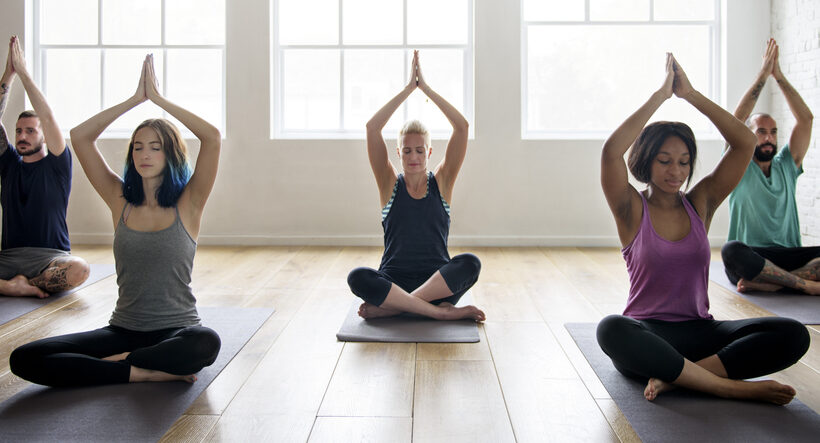
We’ve all felt stressed, anxious, and even depressed sometimes in our lives. When those feelings become frequent or permanent, it’s best to seek help from a therapist. Nevertheless, there are some things you can do to combat those issues yourself. In this article, we will focus on practicing yoga for stress, anxiety, and depression.
Many people start doing yoga motivated by physical benefits. But what we discover as we continue practicing is the strong impact it has on our minds and spiritual growth. Yoga affects depression by decreasing the impact of stress, increasing energy, and elevating your mood. Before we recommend specific asanas and types of yoga for depression, we will go through some proven facts and benefits.
Is Yoga Good For Anxiety And Depression?
These days, many methods and supplements promise to help with psychiatric disorders – but with no backing in science. It’s understandable if you are skeptical.
Is yoga good for depression and anxiety? Or is it just another fad?
The idea of using yoga for stress, anxiety, depression, and concurrent mental health disorders isn’t only based on personal experience. Scientists have researched this ancient practice and undividedly agreed that it has a beneficial impact on our mental health.
One of the most notable scientific documents about yoga is the Harvard Mental Health Letter, first published in 2009 and periodically updated. In the article, they promote yoga as a natural method to relieve anxiety, regulate our response to stress, and manage symptoms of depression.
Benefits of Yoga for Anxiety and Depression
So, what can you expect from using yoga therapy for anxiety and depression? What are the benefits and how exactly does it work? Here are some of the impacts yoga has on your brain and body, which help reduce symptoms of mental disorders:
- Elevates mood and reduces anger and anxiety
- Increases GABA levels in your body. GABA s a primary inhibitory neurotransmitter, which plays a crucial role in emotion regulation, and can consequently reduce symptoms of depression and anxiety
- Increases levels of the BDNF protein. BDNF promotes formation of new brain cells, and can act as a natural antidepressant.
- Decreases inflammation. Inflammation is linked to a higher risk of depression.
- Relieves stress. It does so by reducing levels of cortisol, slowing heart and breathing rate, and lowering high blood pressure.
- Increases heart rate variability (HRV), which helps your body to adapt to stress.
- Pranayamas, yogic breathing exercises, are effective in decreasing anxiety and depressive symptoms.
- As every exercise, yoga increases secretion of serotonin, dubbed the “happy hormone”, which plays a key role in effective depression treatment.
- Through all these hormonal effects, yoga also improves sleep quality, reduces fatigue and increases energy
These benefits are confirmed through many studies. Individual researchers have focused on an array of groups including healthy adults, women struggling with emotional distress, veterans suffering from PTSD, bipolar patients, and young adults with mild depression. All groups reported positive effects of yoga on their mood, symptoms and overall well being.
Of course, if you are diagnosed with a mental illness or suffering symptoms, you should visit a doctor and be open for standard treatment with therapy and potentially medicine. Consider yoga a supplement that will boost your standard treatment, and help you regain control over your mental health.
Best Types of Yoga For Anxiety And Depression
It’s time to go through the best yoga practices for anxiety and depression. Yoga means unity, in many aspects of the word, and that also proposes its effects are unified – regardless of the specific sequence or asana you do. Nevertheless, many yogis and researchers mention specific yoga exercises for depression and anxiety. After you understand how specific postures can help you with depression, you can look for yoga types which utilize these asanas.
We will mention three types of yoga which implement these poses. Additionally, these yoga styles primarily focus on the mind-to-breath connection and meditation, rather than physical exercise.
- Hatha Yoga. If you are a beginner, you can ease in the practice with Hatha yoga. This style teaches the basic postures, and often includes those on our list. Hatha yoga is simple and available to everyone, which makes it appropriate for learning breathwork. Breath-to-movement connection promotes greater mindfulness and alleviates symptoms of depression, stress and anxiety. Hatha is a flow class, meaning you are constantly moving from one posture to the other. As this requires you to follow instructions and focus on alignment in each pose, it will be easier not to worry or think about anything aside from the practice itself.
- Kundalini Yoga. Kundalini yoga is a synthesis of many yogic physical and spiritual practices. It’s based on the idea of Kundalini Shakti, a spiritual energy that resides at the base of your spine. Kundalini yoga strives to awaken this energy and elevate it through the six chakras placed along the spine, and through the crown chakra on your head. Kundalini yoga works on your mind and body simultaneously, by incorporating movement, breathing patterns and chanting of mantras. By doing so, you’re breaking down the walls and barriers you’ve built in your body and mind, and are able to achieve inner peace. As you practice Kundalini yoga, you will become more self aware, which will prove useful when you need to overcome panic attacks or intense feelings of depression.
- Pranayama Yoga. When you’re depressed, it can be hard to get yourself to exercise. And that’s ok. There’s no need to force yourself to do anything that doesn’t feel good. In those moments, you can turn to Pranayama. Pranayama yoga allows you to reap the healing benefits of yoga, without moving through different poses. It only requires you to sit in a single, comfortable position, and works only on your breath. Yogis have always known – and science is beginning to understand – the restorative power of the breath. Pranayamas slow and regulate your breathing, which engages the parasympathetic nervous system and calms your mind. When you are anxious and stressed you tend to breathe faster. That breaks the natural balance of oxygen and carbon dioxide in your body, and upsets the ideal PH level. When that happens, you feel irritated and anxious. By controlling your breath, you can restore this balance, calm your nerves and lower your heart rate. If you’ve never practiced pranayama before, you can start simply by observing your regular breathing patterns. When you focus on our breath, it naturally slows down and deepens. Once you feel ready, you can begin exploring different types of pranayama. Give yourself time to try and discover what works best for you. When you find your sweet spot, the most enjoyable method, focus only on that single technique.
Best Yoga Poses For Anxiety And Depression
Let’s start by listing 6 yoga poses for depression and anxiety. These asanas work by opening and relaxing certain parts of our bodies which tend to store negative emotions.
Though you can use these postures alone for an instant relief, you can also combine them into your personal yoga sequence for anxiety and depression. Then, every time when you feel anxious, just return to your sequence to calm your mind, clarify your thoughts and elevate your mood.
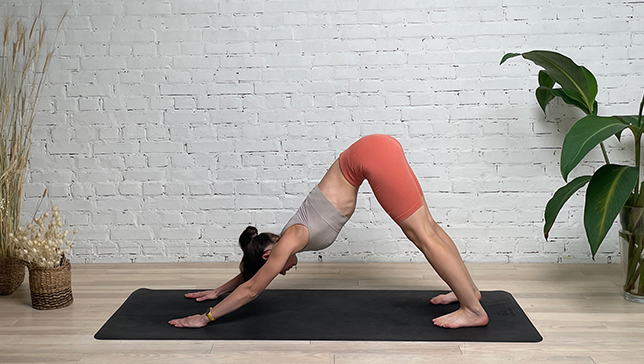
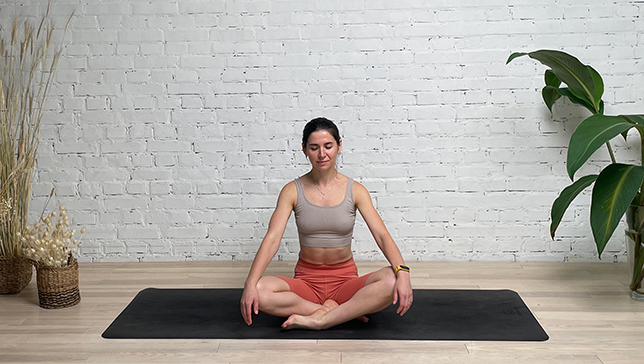
Easy Pose or Sukhasana from the Sanskrit word ‘Sukha’ meaning ‘Pleasure’ and 'Asana' means 'Pose', is a beginner-level restorative and meditative pose. Easy Pose is done with the crossing of the legs in the simplest form, unlike other meditative poses. This posture is excellent for meditation, and pranayama. It also works well to bring the mind and breath under control at the beginning or at the end of a yoga class. Sukhasana is considered a base pose as Easy Pose variations can be derived from this pose. It's a warm-up yoga pose to prepare the body for more intense yoga poses or flows.
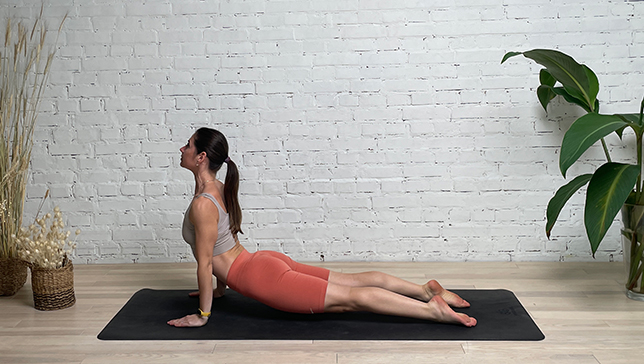
Upward Facing Dog Pose or Urdhva Mukha Svanasana in Sanskrit (‘urdhva’ = ‘ ‘upward’, ‘mukha’ = ‘face’ and ‘svan’ = ‘dog’ 'asana'= 'pose').is a backbend pose that stretches the chest, shoulders, and spine, while also strengthening the arms, wrists, and back muscles. Upward Facing Dog Pose pose is similar to Bhujangasana or the Cobra Pose, the only difference being, that in Cobra Pose the entire lower body touches the floor making a deep backbend and in Upward Facing Dog Pose the lower body from hips to ankles is just above the floor. Therefore, the strength of the arms and shoulders is really important in this position. Upward-Facing Dog Pose is considered a base pose for upward-facing dog pose variations. Urdhva Mukha Svanasana helps boost energy in the body and hence can be included in different yoga sequences.
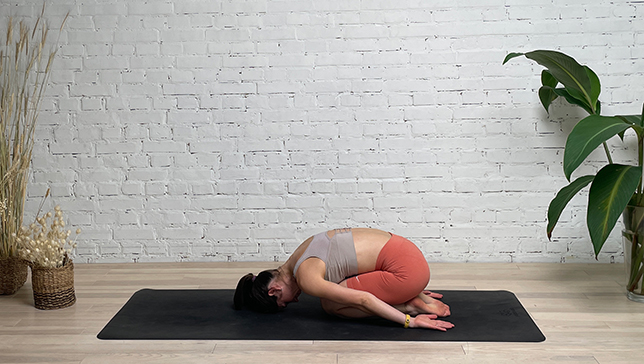
Child’s Pose in Sanskrit (‘Bala’, means ‘child’, 'asana' means 'pose'). Balasana or Child’s Pose is generally practiced at the end of an intense yoga sequence where the connection of the breath and the movement of the body would have been lost. The practice of Balasana concluding such a sequence, allows one to come to peace with the body with the connection of the breath. No doubt all yoga poses should lead to the connection of the breath and the body, but certain poses are challenging where the chest and the abdomen are compressed or pulled, creating uneasiness with the breathing. With Balasana, the spine remains relaxed in a forward fold and forces one to focus on breathing with the compressing of the abdomen and the chest towards the tummy. On the other hand, Balasana can be used purely as a restorative pose to heal patients with severe backaches, and insomnia, treat blood pressure, or just simply bring stress levels down. Child Pose is considered a base pose as child pose variations can be derived from this pose. Child Pose helps boost energy in the body and hence can be included in different yoga sequences. Child Pose is considered a warm-up and restorative yoga pose to prepare or restore the body before or after more intense yoga poses.
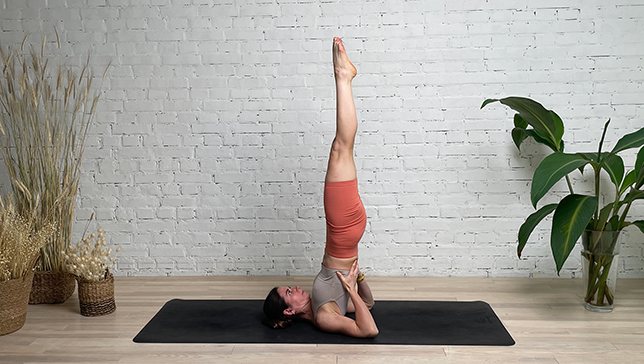
Shoulderstand Pose or Salamba Sarvangasana in Sanskrit (salamba, meaning "supported," sarva, meaning "all," anga meaning "limb," and asana, meaning "pose" or "posture."). This translates to 'All Body Parts Pose'. Salamba Sarvangasana is also known as the "Mother of all Yoga Poses" because it benefits the entire body and also the mind. Shoulderstand Pose (Sarvangasana) can be categorized under intermediate-level yoga poses. To practice this asana, yoga practitioners should have some level of comfort with various intermediate-level yoga poses. As the entire body is balanced on the upper shoulders this pose is also called 'Kandrasana' or 'Shoulderstand Pose'. Sarvangasana is considered a base pose as Sarvangasana variations can be derived from this pose. Sarvangasana helps calm the mind and turn on the parasympathetic system, hence can be included at the end of yoga sequences.
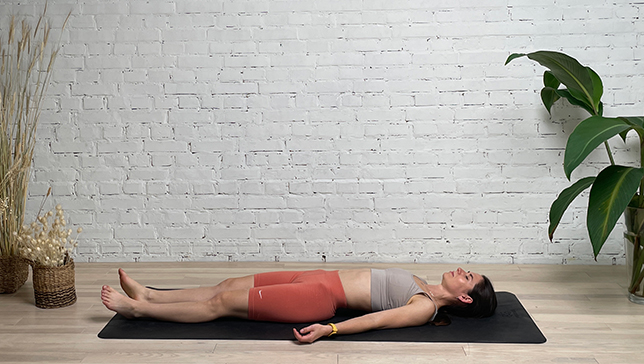
Verse 32 of the first chapter of the Hatha Yoga Pradipika states: ‘Lying upon one’s back on the ground at the full length like a corpse is called Savasana. This removes the fatigue caused by the other yoga poses and induces calmness of mind’. In Sanskrit ‘Sava’ means 'corpse' and 'asana' means 'pose' thus the name of the pose in English is Corpse Pose.
In Corpse Yoga Pose, the objective is to imitate a corpse by keeping the body still. By remaining motionless for some time and keeping the mind still while you are fully conscious, you learn to relax. This conscious relaxation invigorates and refreshes both body and mind.
This apparently easy posture is one of the most difficult to master, irrespective of the level of yoga practice or body flexibility.
At the end of your yoga exercise for anxiety and depression, it will assimilate energy channels and integrate everything you’ve worked on, allowing you to gradually reach a fully relaxed, calm, and positive state.
Conclusion
Next time when you feel distressed and anxious, you can sit or lie down and do the exercise you’ve worked on. That puts you in control, and you’ll know exactly what you need to do to return to a calm, mindful, and confident state of mind. Be well and practice yoga! Namaste 🙂



